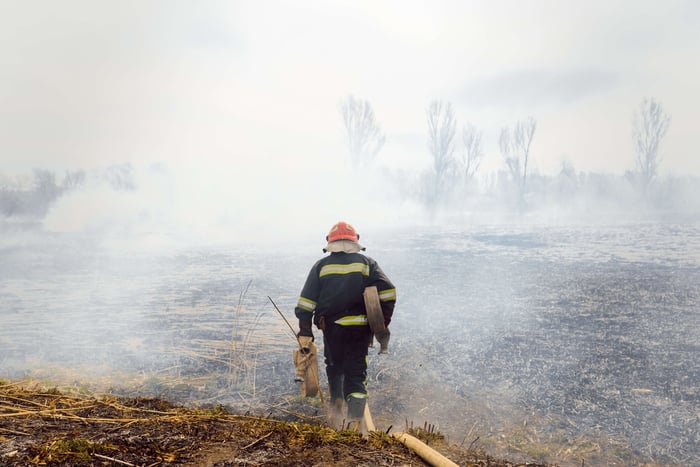How Focal Forensics Redefines Video Redaction for Law Enforcement
The Madison Police Department’s (MPD) recent body-camera pilot program has brought significant attention to the administrative challenges posed by body-worn cameras (BWCs). While these devices are crucial tools for transparency and accountability, their implementation comes with a complex set of logistical and financial hurdles. Among these, video redaction for public records requests has emerged as a critical pain point.
The MPD’s report highlights the significant resources required to process and redact body-camera footage. Between April and October 2024, the department processed 321 video requests, with 207 directly related to body-worn cameras. Sixty-six requests required detailed redaction, consuming more than 180 staff hours. These figures underscore a reality many law enforcement agencies face: transparency demands time, money, and skilled labor.
At Focal Forensics, we understand the immense pressure law enforcement agencies face in meeting these demands. Our specialized video redaction services offer a solution, helping agencies streamline workflows, reduce costs, and maintain compliance while fostering public trust. Here’s how we address the challenges outlined in MPD’s report.
The Growing Need for Redaction Services
Body-worn cameras are increasingly seen as essential for modern policing. They enhance transparency, provide valuable evidence, and hold both officers and the public accountable. However, these benefits come with a significant operational cost.
In Wisconsin, Act 253 now allows law enforcement agencies to charge fees for redaction services, marking a significant shift in public records law. Yet, even with the ability to offset costs, the workload remains a challenge. Redaction requires careful review to obscure sensitive information such as faces, license plates, or other identifying details that could compromise privacy or violate legal standards.
For agencies like MPD, this means dedicating significant staff hours to review and redact footage. The pilot program report highlights how the process of reviewing footage in real time—sometimes for hours—adds up quickly. These demands stretch already limited resources, creating bottlenecks in processing public-records requests.
Challenges Identified in MPD’s Body-Camera Report
The MPD report offers detailed insight into the administrative burdens of redaction:
High Volume of Requests:
Over six months, MPD processed 321 video requests, with 207 specific to body-camera footage. This steady influx demonstrates the growing public demand for access to police records, a trend likely to continue as body-camera programs expand.Time-Consuming Review and Redaction:
For the 66 requests requiring detailed redaction, staff spent more than 180 hours reviewing and editing footage. This translates to roughly six hours of work per request—a significant resource drain when multiplied across hundreds of annual requests.Staffing Limitations:
MPD’s redaction process relied on a small team of program assistants and lab technicians. The report underscores the need for additional positions to handle the workload effectively, estimating nearly $300,000 in annual staffing costs to support a department-wide BWC program.Ambiguities in Act 253:
Wisconsin’s new law allows agencies to charge redaction fees, but questions remain about what qualifies as redaction time. Critics argue that reviewing footage shouldn’t count toward these fees, creating potential conflicts over cost calculations.
How Focal Forensics Addresses These Challenges
At Focal Forensics, we specialize in simplifying the complex and resource-intensive process of video redaction. By combining advanced technology with a deep understanding of law enforcement needs, we offer solutions tailored to challenges like those faced by MPD.
1. Streamlining Redaction with Advanced Technology
Manual redaction processes are slow and labor-intensive, often requiring staff to review footage in real time to identify sensitive information. Our AI-powered tools automate much of this work, enabling:
- Automatic Detection and Blurring: Faces, license plates, and other sensitive details are automatically identified and obscured, saving hours of manual effort.
- Efficient Review: Our software flags key moments in footage, allowing staff to focus on areas that require additional attention rather than reviewing entire videos.
2. Reducing Administrative Costs
With Act 253 in place, agencies can recoup some redaction costs, but keeping those costs manageable is essential. By leveraging our technology, departments can significantly reduce the time spent on each request, minimizing the overall financial burden.
3. Ensuring Compliance and Transparency
Public trust hinges on the ability of law enforcement to fulfill records requests promptly and accurately. Our solutions ensure compliance with local, state, and federal guidelines while maintaining the highest standards of privacy protection.
4. Supporting Staffing Needs
Rather than expanding internal teams, agencies can rely on our services to handle the heavy lifting. This reduces the need for additional hires, saving significant amounts in annual staffing costs while improving efficiency.
Balancing Transparency and Operational Efficiency
The MPD report highlights a critical tension in modern policing: the need for transparency versus the operational challenges of meeting that demand. Body-worn cameras are powerful tools for accountability, but without effective redaction processes, their benefits can be overshadowed by administrative bottlenecks.
By partnering with Focal Forensics, law enforcement agencies can strike a balance. Our services allow departments to maintain transparency and comply with public-records laws without compromising their ability to serve and protect.
Looking Ahead: The Future of Redaction in Law Enforcement
As body-camera programs expand nationwide, the demand for efficient redaction services will only grow. Emerging technologies, such as artificial intelligence and machine learning, offer exciting possibilities for streamlining these processes.
Focal Forensics is committed to staying at the forefront of innovation. Our investment in cutting-edge technology ensures that we can continue to meet the evolving needs of law enforcement agencies.
The Role of AI in Redaction
AI-driven tools are transforming the way agencies handle video footage. From automatic object detection to advanced analytics, these technologies reduce manual effort while improving accuracy.
Expanding Partnerships
By collaborating with agencies like MPD, we aim to refine our solutions further, ensuring they align with the unique challenges of each department.
Conclusion: Empowering Law Enforcement Through Redaction Services
The Madison Police Department’s body-camera report underscores the urgent need for streamlined, cost-effective redaction processes. As public demand for transparency grows, law enforcement agencies face increasing pressure to process video footage efficiently and accurately.
At Focal Forensics, we’re proud to offer solutions that address these challenges head-on. By leveraging advanced technology and expertise, we help agencies save time, reduce costs, and enhance transparency—all while ensuring compliance with legal standards.
If your department is struggling with the demands of video redaction, let Focal Forensics be your trusted partner. Together, we can make transparency achievable and sustainable for law enforcement.



